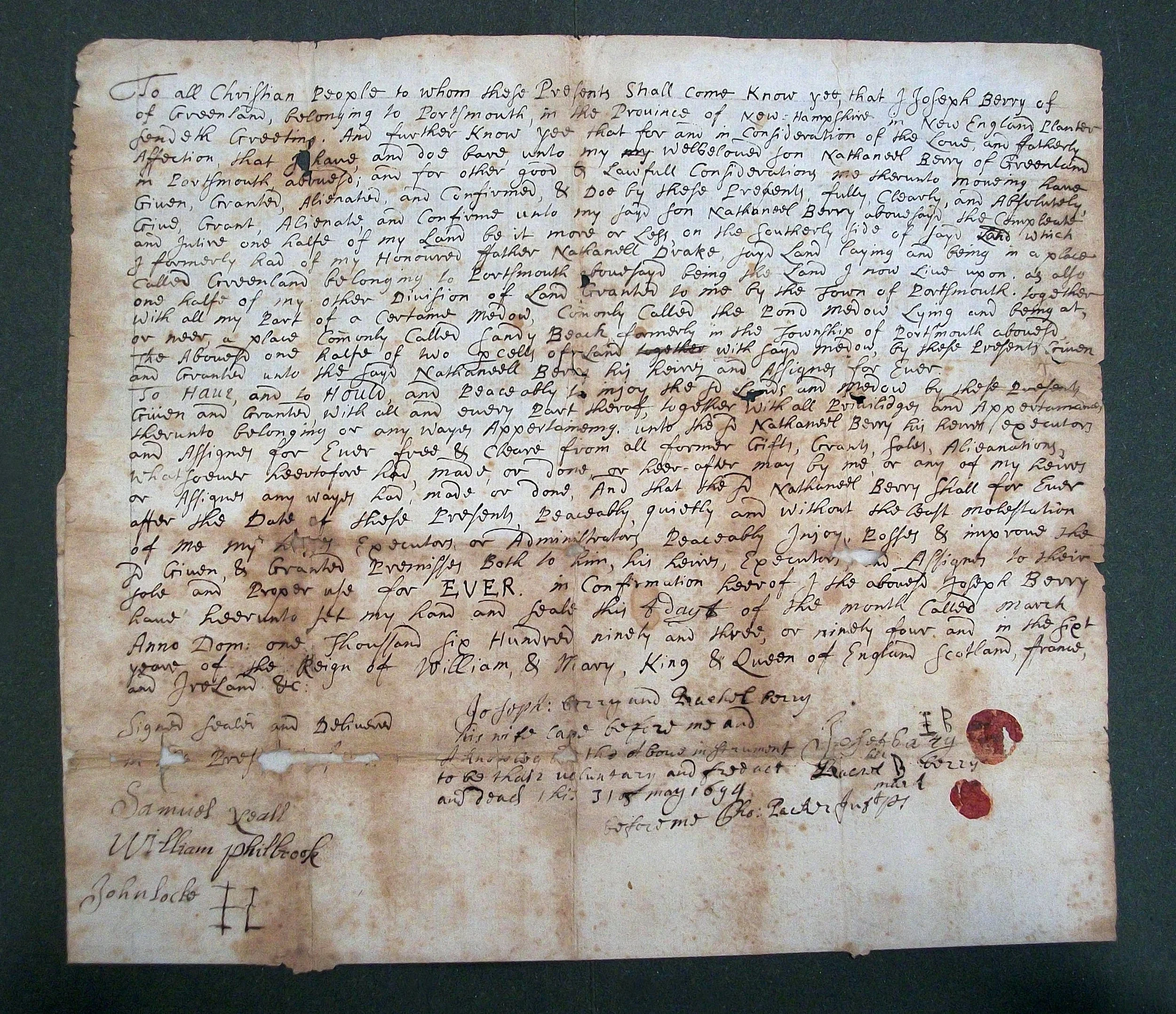Our First Packer Ancestor to come to the New World
Terry Packer is our guest blogger for a series of five posts telling the story about the research and acquisition of an early land transfer document signed by his ancestor.
Part 2 - DATES
Our document's date, given in the text as of March 4, 1693, or 94, does not indicate confusion over the year. It reflects the fact that the newer Gregorian calendar, which we still use today, was emergent in the colonies while the traditional Julian calendar was still used in England. During the late 1600s, both calendars were in use concurrently, with England not officially adopting the Gregorian calendar until 1752.
The month names used by the two calendars were identical. However, New Year's Day of the older Julian calendar occurred on March 25, not January 1. That is why dates in the January to March period took the form February 1693/94 to reflect it was still 1693 by the Julian calendar but, having passed January 1st, that same day was in the new year of 1694 by the modern Gregorian calendar. Dr. Packer practiced dual-year notation as well. But the date of his certification, May 31st, would have been properly recorded as 1694 using either calendar.
Experts will note that a second difference between Julian and Gregorian calendars was that they accumulated leap days differently. This meant that in addition to writing dual years for January through March dates, the daily dates of the calendars diverged over many years as leap days accumulated.
For this reason, the use of dual calendars in the 17th century can lead to confusion, especially when specific dates are of consequence. For example, it was a mystery why the gravestone of Dr. Packer's first wife Hephzibah in the Old Burying Ground of Salem, Massachusetts is inscribed January 22, 1684/5, yet the Vital Records of Salem present the birth date of their second daughter, Susanna, as of February 1, 1684/85. Were there circumstances under which Hephzibah could have died later than the date on her headstone? How could Susanna have been born after her mother had already died? It took some time before the answers to these questions came to light. In the late 1600s the accumulated difference between the two calendars totaled ten days and the differential between January 22 and February 1 is ten days. So Hephzibah's date of death was Julian and Susanna's recorded date of birth was Gregorian. And despite the differing dates, both events occurred on the very same bittersweet day, with Hephzibah dying giving birth to her daughter, Susanna.





